
Toshiba EMI Odeon and Apple Label
06. Beatles No.5 (OR-7103, OR/AR-8028)
(Update: 4th. September 2018)



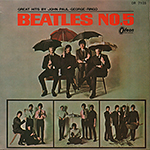 Odeon 1st. Sleeve |
|
|
| TITLE | Beatles No.5 |
||||
| CATALOG NUMBER | OR-7103 |
||||
| RELEASE DATE | 5th May.1965 / First Press |
||||
| TRACK LISTING | SIDE 1 | SIDE 2 | |||
| Long Tall Sally |
I Feel Fine |
||||
| Sie Liebt Dich (She Loves You) |
Komm Gib Mir Deine Hand (I Want To Hold
Your Hand) |
||||
| Anna (Go To Him) |
Chains |
||||
| Matchbox |
Slow Down |
||||
| You Really Got A Hold On Me |
All I've Got To Do |
||||
| She's A Woman |
I Call Your Name | ||||
| Ask Me Why |
This Boy |
||||
| FRONT --> Click! | BACK --> Click! | SIDE 1 --> Click! | SIDE 2 --> Click! | DISK | |
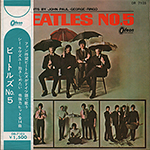 |
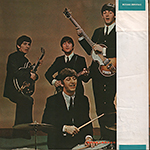 |
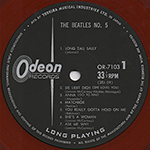 |
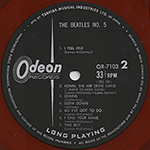 |
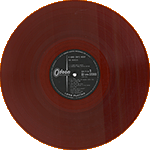 |
|
| INNER SLEEVE |
INNER SLEEVE CLOSE UP |
||||
| FRONT --> Click! | BACK --> Click! | ||||
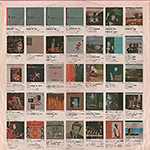 |
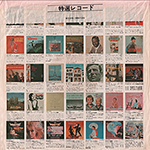 |
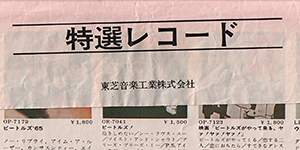 |
The original colour "advert" inner bag has a fold-over flap at the top of the bag to prevent the record from falling out. | ||
|
LYRIC
SHEET (Bifold Type)
|
|||||
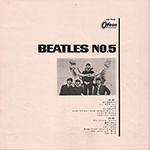 |
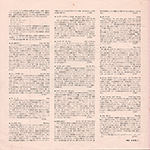 |
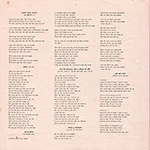 |
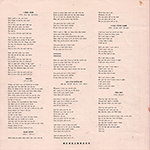 |
The lyric sheet is bifold type. | |
| LYRIC SHEET CLOSE
UP |
|||||
 |
 |
 |
Catalog number and the
company name "Toshiba Musical Industries Ltd." were printed
on the lyric sheet. |
||
| Light Blue OBI CLOSE UP | |||||
| FRONT | BACK --> Click! | ||||
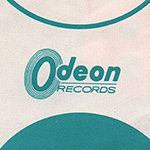 |
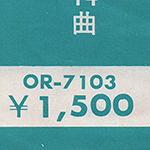 |
1st. pressing had a light blue / white OBI
and priced ¥1,500 on obi strip. Odeon logo mark and catalog
number "OR 7103" were printed on the front. |
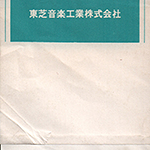 |
There is no order sheet on the
back side of the Obi. |
|
| FRONT AND BACK COVER CLOSE UP | |||||
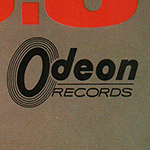 |
 |
"Toshiba Musical Industries Ltd." and "F-¥1,500" were printed at the bottom of the back cover. | |||
 |
|||||
| LABEL CLOSE UP | |||||
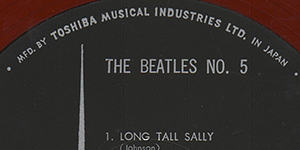 |
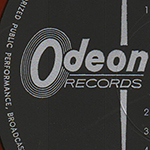 |
Toshiba
pressed a lot of their records on red, "Everclean" vinyl
from 1958 through 1974 (maybe). The Everclean vinyl
was designed to be less prone to collecting static
electricity and dust than the more common black vinyl. The
words "MFD. BY TOSHIBA MUSICAL INDUSTRIES LTD. IN JAPAN" was
printed at the perimeter. |
|||
| LABEL CLOSE UP | |||||
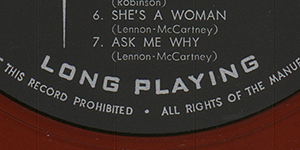 |
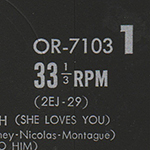 |
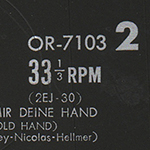 |
The words "LONG PLAYING" was
printed at the bottom of the label. Catalog number and matrix number were printed at the right side of the center hole. |
||
|
OTHER ITEM / Promotional Poster --> Click!
|
|||||
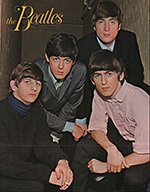 |
This
is
an extremely rare original Japanese promotional poster,
printed and issued in 1965 for the "Beatles No.5" LP.
(maybe) |
||||
| RECORD LABEL | Odeon Label Type-1 (with the words "LONG
PLAYING") |
||||
| MIX | MONO |
||||
| MATRIX No. | SIDE 1 | 2EJ-29 3 |
|||
| SIDE 2 | 2EJ-30
5 |
||||
| PRESS MARK | D5 |
||||
| VINYL COLOR | RED |
||||
| RECORD COMPANY'S NAME | SLEEVE | Toshiba
Ongaku kogyo Kabusikigaisha |
|||
| LABEL | MFD. BY
TOSHIBA MUSICAL INDUSTRIES LTD. IN JAPAN |
||||
| SYMBOL/PRICE | F - ¥1,500 |
||||
| LYRIC SHEET STYLE | Bifold Type |
||||
| COVER FORM | Single type. Full laminated soft cover. |
||||
| INNER SLEEVE |
The original colour "advert" inner bag
Type-2 |
||||
| OBI |
Light blue Obi / without Order sheet |
||||
| COVER DESIGN/ PHOTO/ NOTES | Notes: Yoshiji Kizaki |
||||
|
COMMENTS
|
Black Odeon label with
silver print. The words "LONG PLAYING" was printed at the bottom of the label. Toshiba released the first Japanese record featuring the Beatles. When this record was released, Toshiba's official name was "Toshiba Musical Industries Ltd." and they used the Odeon label for this and subsequent Beatles releases. The Japanese-only release "Beatles No. 5", using similar front art to the US jacket for "Beatles '65" but different title and track line-up. Originally released May 1965. Red vinyl: Besides good sound and quality printing, Japanese records also offered some other things of interest to the collector. One of the primary manufacturing companies in Japan, Toshiba, pressed a lot of their records on red, “Everclean” vinyl from 1958 through 1974 (maybe). While not pressed as collectors’ items, these red vinyl pressings are more sought out by collectors than their black vinyl counterparts. The Everclean vinyl was designed to be less prone to collecting static electricity and dust than the more common black vinyl. The obi: "Light blue" Obi It is light blue / white in design with light blue background with the half circle on top. It also features an Odeon logo, catalogue number and price information. While most Japanese records feature local music, a lot of music fans there like foreign music, as well. The language barrier in Japan presented a problem – should foreign album covers be changed for Japanese albums? The solution was the obi, which means “belt” or “sash”. The obi is a strip of paper, usually about two inches wide, that wraps vertically around the album cover, containing information about the artist and album in Japanese. As these strips of paper were fragile and easily torn, they are often missing, especially since consumers in the 1950s and 1960s attached little significance to them. Finding Japanese records made prior to 1970 that still have the obi intact can be quite difficult, and for some albums, nearly impossible. The inclusion of the obi can dramatically affect the price of some Japanese records, sometimes increasing the price by a factor of ten. While usually found in a wraparound strip, there are other versions of the obi that have occasionally been used. In the early 1960s, a short-lived hankake obi, or “half obi” was used. These were small strips of paper that simply folded over the top of the cover. These were problematic for retailers, as they tended to easily fall off of the record. |
||||
| TITLE | Beatles No.5 |
||||
| CATALOG NUMBER | OR-8028 |
||||
| RELEASE DATE | August 1968 ? / Third Press |
||||
| TRACK LISTING | SIDE 1 | SIDE 2 | |||
| Long Tall Sally |
I Feel Fine |
||||
| Sie Liebt Dich (She Loves You) |
Komm Gib Mir Deine Hand (I Want To Hold
Your Hand) |
||||
| Anna (Go To Him) |
Chains |
||||
| Matchbox |
Slow Down |
||||
| You Really Got A Hold On Me |
All I've Got To Do |
||||
| She's A Woman |
I Call Your Name | ||||
| Ask Me Why |
This Boy |
||||
| FRONT --> Click! | BACK --> Click! | SIDE 1 --> Click! | SIDE 2 --> Click! | DISK | |
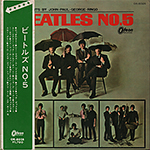 |
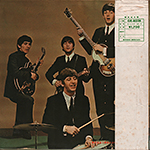 |
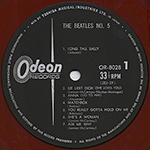 |
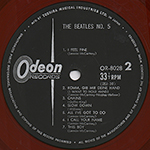 |
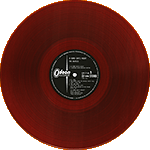 |
|
| INNER SLEEVE |
INNER SLEEVE CLOSE UP |
||||
| FRONT --> Click! | BACK --> Click! | ||||
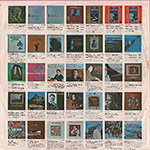 |
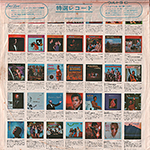 |
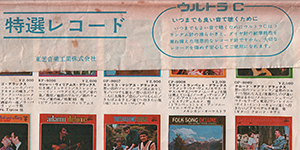 |
The original colour "advert" inner bag has a fold-over flap at the top of the bag to prevent the record from falling out. | ||
|
LYRIC
SHEET (Bifold Type)
|
|||||
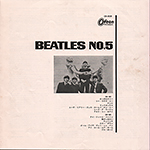 |
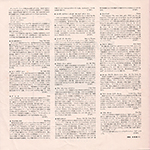 |
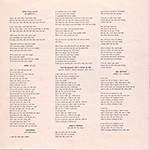 |
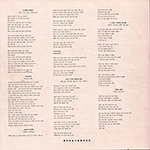 |
The lyric sheet is bifold type. | |
| LYRIC SHEET CLOSE
UP |
|||||
 |
 |
 |
Catalog number and the
company name "Toshiba Musical Industries Ltd." were printed
on the lyric sheet. |
||
| Odeon Green Arrow OBI CLOSE UP | |||||
| FRONT | BACK --> Click! | ||||
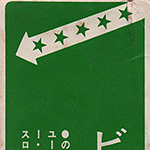 |
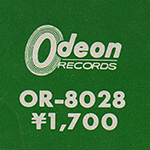 |
3rd. pressing had a green "arrow"
OBI and priced ¥1,700 on rear sleeve and obi strip. |
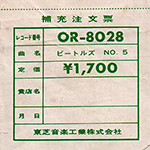 |
There is order sheet on
the back side of the Obi. |
|
| FRONT AND BACK COVER CLOSE UP | |||||
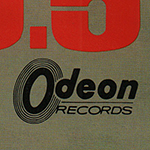 |
 |
"Toshiba Musical Industries Ltd." and "H-¥1,700" were printed at the bottom of the back cover. | |||
 |
|||||
| LABEL CLOSE UP | |||||
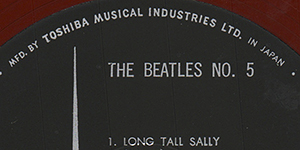 |
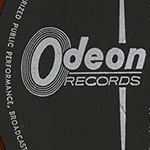 |
Toshiba
pressed a lot of their records on red, "Everclean" vinyl
from 1958 through 1974 (maybe). The Everclean vinyl
was designed to be less prone to collecting static
electricity and dust than the more common black vinyl. The
words "MFD. BY TOSHIBA MUSICAL INDUSTRIES LTD. IN JAPAN" was
printed at the perimeter. |
|||
| LABEL CLOSE UP | |||||
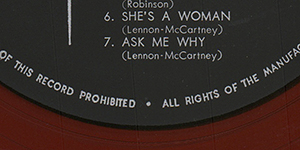 |
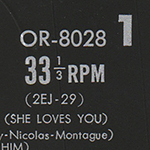 |
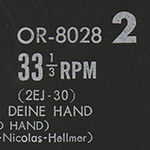 |
The words "LONG PLAYING" was erased at the bottom of
the label. Catalog number and matrix number were printed at the right side of the center hole. |
||
|
OTHER ITEM
|
|||||
| - |
|||||
| RECORD LABEL | Odeon Label Type-2 (without the words "LONG
PLAYING") |
||||
| MIX | MONO |
||||
| MATRIX No. | SIDE 1 | 2EJ-29-2 6 |
|||
| SIDE 2 | 2EJ-30-2S
1 |
||||
| PRESS MARK | 7E
-> 7M -> 8H |
||||
| VINYL COLOR | RED |
||||
| RECORD COMPANY'S NAME | SLEEVE | Toshiba
Ongaku kogyo Kabusikigaisha |
|||
| LABEL | MFD. BY
TOSHIBA MUSICAL INDUSTRIES LTD. IN JAPAN |
||||
| SYMBOL/PRICE | H - ¥1,700 |
||||
| LYRIC SHEET STYLE | Bifold Type |
||||
| COVER FORM | Single type. Full laminated soft cover. |
||||
| INNER SLEEVE |
The original colour "advert" inner bag
Type-6 |
||||
| OBI |
Green / white so called "Odeon Arrow" OBI |
||||
| COVER DESIGN/ PHOTO/ NOTES | Notes: Yoshiji Kizaki |
||||
|
COMMENTS
|
Black Odeon label with
silver print. The words "LONG PLAYING" was printed at the bottom of the label. In 1967, the price of LPs rose, and the price of monaural LPs rose from 1,500 yen to 1,700 yen. Already released Beatles LPs have been reissued with record numbers changed to the OP-8000 series and prices increased. The obi has also been changed to an arrow obi. The Japanese-only release "Beatles No. 5", using similar front art to the US jacket for "Beatles '65" but different title and track line-up. Originally released May 1965. Red vinyl: Besides good sound and quality printing, Japanese records also offered some other things of interest to the collector. One of the primary manufacturing companies in Japan, Toshiba, pressed a lot of their records on red, “Everclean” vinyl from 1958 through 1974 (maybe). While not pressed as collectors’ items, these red vinyl pressings are more sought out by collectors than their black vinyl counterparts. The Everclean vinyl was designed to be less prone to collecting static electricity and dust than the more common black vinyl. This LP was manufactured two ways: both Black and Red vinyl. The obi: A. K. A."Arrow" Obi 4th. pressing had a green / white so called "Arrow" OBI and priced ¥2000 on rear sleeve and obi strip. On June 1967, starting with "Oldies (OP-8016)", numbering for new Odeon LPs changed to the 8000 range numbers. So Obis were renew, A.K.A. Odeon "Arrow Obi" in green and with the same design as the Apple Obis. While most Japanese records feature local music, a lot of music fans there like foreign music, as well. The language barrier in Japan presented a problem – should foreign album covers be changed for Japanese albums? The solution was the obi, which means “belt” or “sash”. The obi is a strip of paper, usually about two inches wide, that wraps vertically around the album cover, containing information about the artist and album in Japanese. As these strips of paper were fragile and easily torn, they are often missing, especially since consumers in the 1950s and 1960s attached little significance to them. Finding Japanese records made prior to 1970 that still have the obi intact can be quite difficult, and for some albums, nearly impossible. The inclusion of the obi can dramatically affect the price of some Japanese records, sometimes increasing the price by a factor of ten. While usually found in a wraparound strip, there are other versions of the obi that have occasionally been used. In the early 1960s, a short-lived hankake obi, or “half obi” was used. These were small strips of paper that simply folded over the top of the cover. These were problematic for retailers, as they tended to easily fall off of the record. |
||||
| TITLE | Beatles No.5 |
||||
| CATALOG NUMBER | OR-8028 |
||||
| RELEASE DATE | September 1969 ? / Third Press
(Toshiba Press) |
||||
| TRACK LISTING | SIDE 1 | SIDE 2 | |||
| Long Tall Sally |
I Feel Fine |
||||
| Sie Liebt Dich (She Loves You) |
Komm Gib Mir Deine Hand (I Want To Hold
Your Hand) |
||||
| Anna (Go To Him) |
Chains |
||||
| Matchbox |
Slow Down |
||||
| You Really Got A Hold On Me |
All I've Got To Do |
||||
| She's A Woman |
I Call Your Name | ||||
| Ask Me Why |
This Boy |
||||
| FRONT --> Click! | BACK --> Click! | SIDE 1 --> Click! | SIDE 2 --> Click! | DISK | |
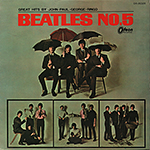 |
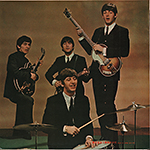 |
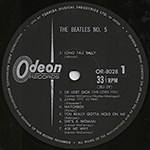 |
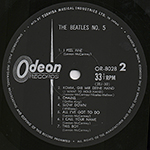 |
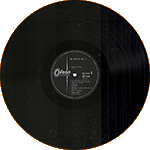 |
|
| INNER SLEEVE |
INNER SLEEVE CLOSE UP |
||||
| FRONT --> Click! | BACK --> Click! | ||||
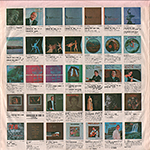 |
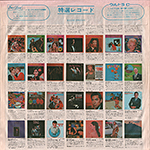 |
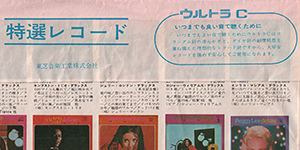 |
The original colour "advert" inner bag has a fold-over flap at the top of the bag to prevent the record from falling out. | ||
|
LYRIC
SHEET (Bifold Type)
|
|||||
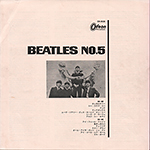 |
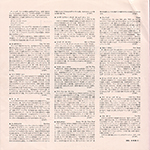 |
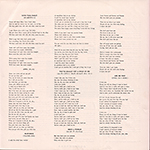 |
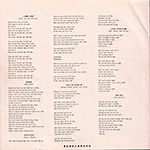 |
The lyric sheet is bifold type. | |
| LYRIC SHEET CLOSE
UP |
|||||
 |
 |
 |
Catalog number and the
company name "Toshiba Musical Industries Ltd." were printed
on the lyric sheet. |
||
| Odeon Green Arrow OBI CLOSE UP | |||||
| FRONT | BACK --> Click! | ||||
| Sorry, I don't have it. |
|||||
| FRONT AND BACK COVER CLOSE UP | |||||
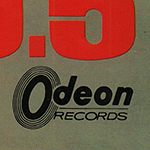 |
 |
"Toshiba Musical Industries Ltd." and "H-¥1,700" were printed at the bottom of the back cover. | |||
 |
|||||
| LABEL CLOSE UP | |||||
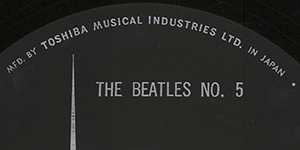 |
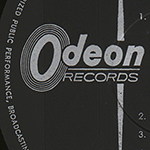 |
Toshiba
pressed a lot of their records on red, "Everclean" vinyl
from 1958 through 1974 (maybe). The Everclean vinyl
was designed to be less prone to collecting static
electricity and dust than the more common black vinyl. The
words "MFD. BY TOSHIBA MUSICAL INDUSTRIES LTD. IN JAPAN" was
printed at the perimeter. |
|||
| LABEL CLOSE UP | |||||
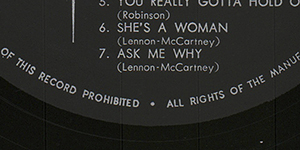 |
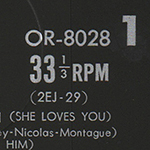 |
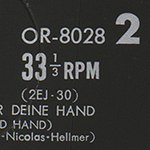 |
The words "LONG PLAYING" was erased at the bottom of
the label. Catalog number and matrix number were printed at the right side of the center hole. |
||
|
OTHER ITEM
|
|||||
| - |
|||||
| RECORD LABEL | Odeon Label Type-2 (without the words "LONG
PLAYING") |
||||
| MIX | MONO |
||||
| MATRIX No. | SIDE 1 | 2EJ-29-2S 5 |
|||
| SIDE 2 | 2EJ-30-2S 6 | ||||
| PRESS MARK | 9A
-> 9J |
||||
| VINYL COLOR | BLACK
(Toshiba Press) |
||||
| RECORD COMPANY'S NAME | SLEEVE | Toshiba
Ongaku kogyo Kabusikigaisha |
|||
| LABEL | MFD. BY
TOSHIBA MUSICAL INDUSTRIES LTD. IN JAPAN |
||||
| SYMBOL/PRICE | H - ¥1,700 |
||||
| LYRIC SHEET STYLE | Bifold Type |
||||
| COVER FORM | Single type. Full laminated soft cover. |
||||
| INNER SLEEVE |
The original colour "advert" inner bag
Type-5 |
||||
| OBI |
Green / white so called "Odeon Arrow" OBI |
||||
| COVER DESIGN/ PHOTO/ NOTES | Notes: Yoshiji Kizaki |
||||
|
COMMENTS
|
Black Odeon label with
silver print. The words "LONG PLAYING" was printed at the bottom of the label. In 1967, the price of LPs rose, and the price of monaural LPs rose from 1,500 yen to 1,700 yen.Already released Beatles LPs have been reissued with record numbers changed to the OP-8000 series and prices increased.The obi has also been changed to an arrow obi. The Japanese-only release "Beatles No. 5", using similar front art to the US jacket for "Beatles '65" but different title and track line-up. Originally released May 1965. Red vinyl: Besides good sound and quality printing, Japanese records also offered some other things of interest to the collector. One of the primary manufacturing companies in Japan, Toshiba, pressed a lot of their records on red, “Everclean” vinyl from 1958 through 1974 (maybe). While not pressed as collectors’ items, these red vinyl pressings are more sought out by collectors than their black vinyl counterparts. The Everclean vinyl was designed to be less prone to collecting static electricity and dust than the more common black vinyl. This LP was manufactured two ways: both Black and Red vinyl. The obi: A. K. A."Arrow" Obi 4th. pressing had a green / white so called "Arrow" OBI and priced ¥2000 on rear sleeve and obi strip. On June 1967, starting with "Oldies (OP-8016)", numbering for new Odeon LPs changed to the 8000 range numbers. So Obis were renew, A.K.A. Odeon "Arrow Obi" in green and with the same design as the Apple Obis. While most Japanese records feature local music, a lot of music fans there like foreign music, as well. The language barrier in Japan presented a problem – should foreign album covers be changed for Japanese albums? The solution was the obi, which means “belt” or “sash”. The obi is a strip of paper, usually about two inches wide, that wraps vertically around the album cover, containing information about the artist and album in Japanese. As these strips of paper were fragile and easily torn, they are often missing, especially since consumers in the 1950s and 1960s attached little significance to them. Finding Japanese records made prior to 1970 that still have the obi intact can be quite difficult, and for some albums, nearly impossible. The inclusion of the obi can dramatically affect the price of some Japanese records, sometimes increasing the price by a factor of ten. While usually found in a wraparound strip, there are other versions of the obi that have occasionally been used. In the early 1960s, a short-lived hankake obi, or “half obi” was used. These were small strips of paper that simply folded over the top of the cover. These were problematic for retailers, as they tended to easily fall off of the record. |
||||
| TITLE | Beatles No.5 |
||||
| CATALOG NUMBER | AR-8028 |
||||
| RELEASE DATE | July 1971 ? / 4th. Press |
||||
| TRACK LISTING | SIDE 1 | SIDE 2 | |||
| Long Tall Sally |
I Feel Fine |
||||
| Sie Liebt Dich (She Loves You) |
Komm Gib Mir Deine Hand (I Want To Hold
Your Hand) |
||||
| Anna (Go To Him) |
Chains |
||||
| Matchbox |
Slow Down |
||||
| You Really Got A Hold On Me |
All I've Got To Do |
||||
| She's A Woman |
I Call Your Name | ||||
| Ask Me Why |
This Boy |
||||
| FRONT --> Click! | BACK --> Click! | SIDE 1 --> Click! | SIDE 2 --> Click! | DISK | |
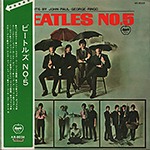 |
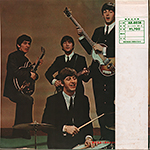 |
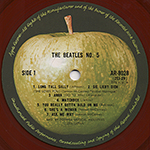 |
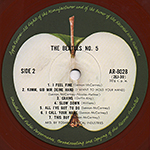 |
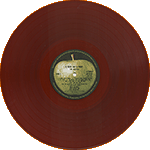 |
|
| INNER SLEEVE |
LYRIC SHEET (Bifold Type) | ||||
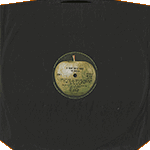 |
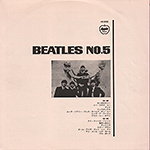 |
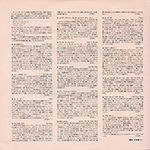 |
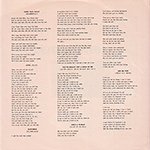 |
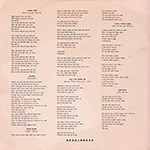 |
|
|
LYRIC
SHEET CLOSE UP
|
|||||
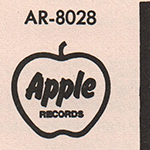 |
Catalog
number
and Apple logomark were printed on the front page. |
 |
 |
||
| Liner notes by
Yoshiji Kizaki. The company name "Toshiba Musical Industries Ltd." were printed on the lyric sheet. |
|||||
| Apple Green Arrow OBI CLOSE UP | |||||
| FRONT | BACK --> Click! | ||||
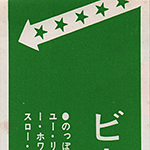 |
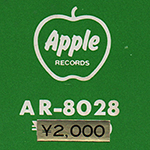 |
4th. pressing had a green "arrow"
OBI and priced ¥1,700 (pasted sticker "¥2,000") on obi
strip. |
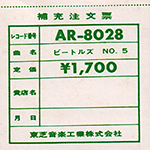 |
There is order sheet on
the back side of the Obi. |
|
| FRONT AND BACK COVER CLOSE UP | |||||
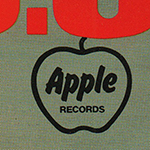 |
 |
"Toshiba Musical Industries Ltd." and "H-¥1,700" were printed at the bottom of the back cover. | |||
 |
|||||
| LABEL CLOSE UP | |||||
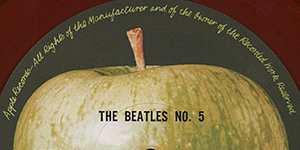 |
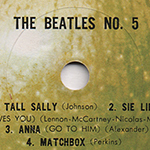 |
In 1969,
Toshiba had to reissue on the Apple label all the records
previously issued on the Odeon label. The phrase "Apple Records - All Rights of the Manufacturer and of the Owner of the Recorded work Reserved." was printed at the perimeter. |
|||
| LABEL CLOSE UP | |||||
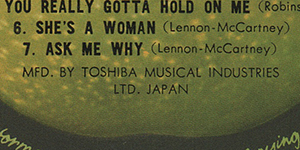 |
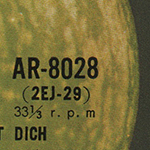 |
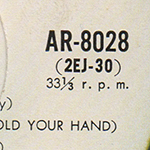 |
The words "MFD. BY TOSHIBA
MUSICAL INDUSTRIES LTD. JAPAN" was printed at the bottom of
the label. Catalog number "AP-8028" and matrix number were printed at the right side of the center hole. |
||
|
OTHER ITEM
|
|||||
 |
With
a
track list sheet. |
||||
| RECORD LABEL | Dark Green Apple label Type-1 |
||||
| MIX | MONO |
||||
| MATRIX No. | SIDE 1 | 2EJ-29 2S
16 |
|||
| SIDE 2 | 2EJ-30
2S
14 |
||||
| PRESS MARK | 1G |
||||
| VINYL COLOR | RED |
||||
| RECORD COMPANY'S NAME | SLEEVE | Toshiba
Ongaku kogyo Kabusikigaisha |
|||
| LABEL | MFD. BY
TOSHIBA MUSICAL INDUSTRIES LTD. JAPAN |
||||
| SYMBOL/PRICE | H - ¥1,700 |
||||
| LYRIC SHEET STYLE | Bifold Type |
||||
| COVER FORM | Single type. Full laminated soft cover. |
||||
| INNER SLEEVE |
Apple custom black sleeve |
||||
| OBI |
Green / white so called "Apple Arrow" OBI |
||||
| COVER DESIGN/ PHOTO/ NOTES | Notes: Yoshiji Kizaki |
||||
|
COMMENTS
|
Dark green Apple label
Type-1with black print. In late (September?)1969, Toshiba had to reissue on the Apple label all the records previously issued on the Odeon label. And in the Apple label, there are two subtypes, TOSHIBA MUSIC and TOSHIBA EMI. Further more, the early copies of the APPLE-TOSHIBA MUSIC type have dark Apple on its label, though the late copies have light one. The Japanese-only release "Beatles No. 5", using similar front art to the US jacket for "Beatles '65" but different title and track line-up. Originally released May 1965. Red vinyl: Besides good sound and quality printing, Japanese records also offered some other things of interest to the collector. One of the primary manufacturing companies in Japan, Toshiba, pressed a lot of their records on red, “Everclean” vinyl from 1958 through 1974 (maybe). While not pressed as collectors’ items, these red vinyl pressings are more sought out by collectors than their black vinyl counterparts. The Everclean vinyl was designed to be less prone to collecting static electricity and dust than the more common black vinyl. This LP was manufactured two ways: both Black and Red vinyl. The obi: A. K. A."Arrow" Obi 3th. and 4th. pressings had a green / white so called "Arrow" OBI and priced ¥1700 on rear sleeve and obi strip. On June 1967, starting with "Oldies (OP-8016)", numbering for new Odeon LPs changed to the 8000 range numbers. So Obis were renew, A.K.A. Odeon "Arrow Obi" in green and with the same design as the Apple Obis. While most Japanese records feature local music, a lot of music fans there like foreign music, as well. The language barrier in Japan presented a problem – should foreign album covers be changed for Japanese albums? The solution was the obi, which means “belt” or “sash”. The obi is a strip of paper, usually about two inches wide, that wraps vertically around the album cover, containing information about the artist and album in Japanese. As these strips of paper were fragile and easily torn, they are often missing, especially since consumers in the 1950s and 1960s attached little significance to them. Finding Japanese records made prior to 1970 that still have the obi intact can be quite difficult, and for some albums, nearly impossible. The inclusion of the obi can dramatically affect the price of some Japanese records, sometimes increasing the price by a factor of ten. |
||||
| TITLE | Beatles No.5 |
||||
| CATALOG NUMBER | AR-8028 |
||||
| RELEASE DATE | December 1972 ? / 5th. Press |
||||
| TRACK LISTING | SIDE 1 | SIDE 2 | |||
| Long Tall Sally |
I Feel Fine |
||||
| Sie Liebt Dich (She Loves You) |
Komm Gib Mir Deine Hand (I Want To Hold
Your Hand) |
||||
| Anna (Go To Him) |
Chains |
||||
| Matchbox |
Slow Down |
||||
| You Really Got A Hold On Me |
All I've Got To Do |
||||
| She's A Woman |
I Call Your Name | ||||
| Ask Me Why |
This Boy |
||||
| FRONT --> Click! | BACK --> Click! | SIDE 1 --> Click! | SIDE 2 --> Click! | DISK | |
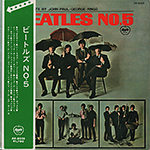 |
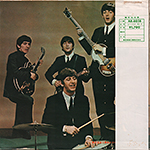 |
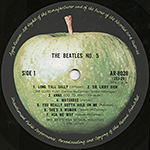 |
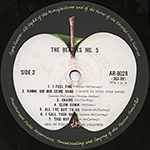 |
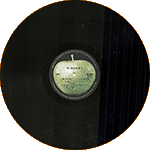 |
|
| INNER SLEEVE |
LYRIC SHEET (Bifold Type) | ||||
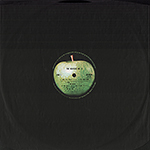 |
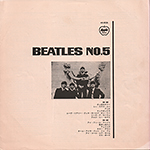 |
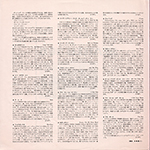 |
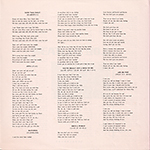 |
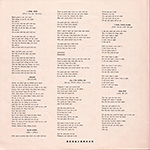 |
|
|
LYRIC
SHEET CLOSE UP
|
|||||
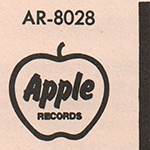 |
Catalog
number
and Apple logomark were printed on the front page. |
 |
 |
||
| Liner notes by
Yoshiji Kizaki. The company name "Toshiba Musical Industries Ltd." were printed on the lyric sheet. |
|||||
| Apple Green Arrow OBI CLOSE UP | |||||
| FRONT | BACK --> Click! | ||||
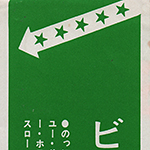 |
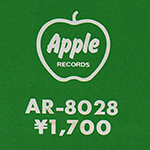 |
4th. pressing had a green "arrow"
OBI and priced ¥1,700 on obi strip. |
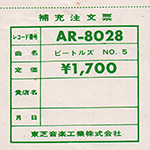 |
There is order sheet on
the back side of the Obi. |
|
| FRONT AND BACK COVER CLOSE UP | |||||
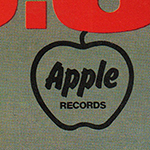 |
 |
"Toshiba Musical Industries Ltd." and "H-¥1,700" were printed at the bottom of the back cover. | |||
 |
|||||
| LABEL CLOSE UP | |||||
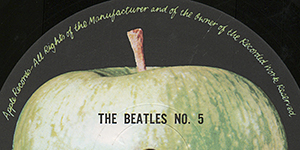 |
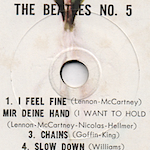 |
In 1969,
Toshiba had to reissue on the Apple label all the records
previously issued on the Odeon label. The phrase "Apple Records - All Rights of the Manufacturer and of the Owner of the Recorded work Reserved." was printed at the perimeter. |
|||
| LABEL CLOSE UP | |||||
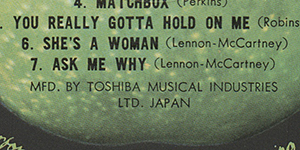 |
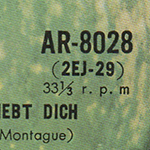 |
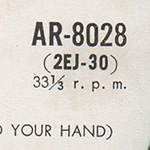 |
The words "MFD. BY TOSHIBA
MUSICAL INDUSTRIES LTD. JAPAN" was printed at the bottom of
the label. Catalog number "AP-8028" and matrix number were printed at the right side of the center hole. |
||
|
OTHER ITEM
|
|||||
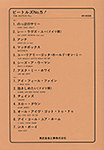 |
With
a
track list sheet. |
||||
| RECORD LABEL | Dark Green Apple label Type-2-1 |
||||
| MIX | MONO |
||||
| MATRIX No. | SIDE 1 | 2EJ-29 3S 6 |
|||
| SIDE 2 | 2EJ-30
2S
20 |
||||
| PRESS MARK | 2MW |
||||
| VINYL COLOR | BLACK |
||||
| RECORD COMPANY'S NAME | SLEEVE | Toshiba
Ongaku kogyo Kabusikigaisha |
|||
| LABEL | MFD. BY
TOSHIBA MUSICAL INDUSTRIES LTD. JAPAN |
||||
| SYMBOL/PRICE | H - ¥1,700 |
||||
| LYRIC SHEET STYLE | Bifold Type |
||||
| COVER FORM | Single type. Full laminated soft cover. |
||||
| INNER SLEEVE |
Apple custom black sleeve |
||||
| OBI |
Green / white so called "Apple Arrow" OBI |
||||
| COVER DESIGN/ PHOTO/ NOTES | Notes: Yoshiji Kizaki |
||||
|
COMMENTS
|
Light green Apple
label Type-2-1with black print. In late (September?)1969, Toshiba had to reissue on the Apple label all the records previously issued on the Odeon label. And in the Apple label, there are two subtypes, TOSHIBA MUSIC and TOSHIBA EMI. Further more, the early copies of the APPLE-TOSHIBA MUSIC type have dark Apple on its label, though the late copies have light one. The Japanese-only release "Beatles No. 5", using similar front art to the US jacket for "Beatles '65" but different title and track line-up. Originally released May 1965. Red vinyl: Besides good sound and quality printing, Japanese records also offered some other things of interest to the collector. One of the primary manufacturing companies in Japan, Toshiba, pressed a lot of their records on red, “Everclean” vinyl from 1958 through 1974 (maybe). While not pressed as collectors’ items, these red vinyl pressings are more sought out by collectors than their black vinyl counterparts. The Everclean vinyl was designed to be less prone to collecting static electricity and dust than the more common black vinyl. This LP was manufactured two ways: both Black and Red vinyl. The obi: A. K. A."Arrow" Obi 3th. and 4th. pressings had a green / white so called "Arrow" OBI and priced ¥1700 on rear sleeve and obi strip. On June 1967, starting with "Oldies (OP-8016)", numbering for new Odeon LPs changed to the 8000 range numbers. So Obis were renew, A.K.A. Odeon "Arrow Obi" in green and with the same design as the Apple Obis. While most Japanese records feature local music, a lot of music fans there like foreign music, as well. The language barrier in Japan presented a problem – should foreign album covers be changed for Japanese albums? The solution was the obi, which means “belt” or “sash”. The obi is a strip of paper, usually about two inches wide, that wraps vertically around the album cover, containing information about the artist and album in Japanese. As these strips of paper were fragile and easily torn, they are often missing, especially since consumers in the 1950s and 1960s attached little significance to them. Finding Japanese records made prior to 1970 that still have the obi intact can be quite difficult, and for some albums, nearly impossible. The inclusion of the obi can dramatically affect the price of some Japanese records, sometimes increasing the price by a factor of ten. |
||||
